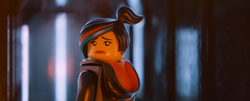
|
To understand the modern image-making processes requires continuous educational updating.
Yuri Neyman, ASC, writes about the evolving role of the Director of Photography in the context of the transformations in the creation of the final image in filmmaking today. He briefly discusses the implications of changing technologies and the evolution of the concept of "Expanded Cinematography" to describe the emerging confluence of live and virtual cinematography. Nick Schager wrote an article that posted on rogerebert.com in August last year entitled "STYLIZED REALISM: THE CINEMATOGRAPHY OF BREAKING BAD, SEASON 1", well worth a read if you haven't caught it already.
Amongst other things, the essay analyzes the psychology behind the use of static and dynamic camera work in the series, as well as composition of shots and the use of light and shadow to metaphorically link the characters of Jesse and Walt when they first meet The NoFilmSchool site has an article pointing to a fascinating interview with Phedon Papamichael on Cinefii that is well worth checking out.
This is great news. Chris McKay worked with absolute passion and commitment on "The Lego Movie", and knows the machinations of getting a Lego movie done as well as anyone.
More information on deadline.com and on Cartoon Brew, amongst other sites. Phil Lord has made a spirited riposte to some misinformation propagated in the comments section of the deadline article. (It fascinates me how people "know" this stuff). I've moved this blog post to a permanent page.....
Cinematography stands at a crossroads, with much discussion focused on and controversy surrounding the definition of the term in the context of films such as "Life of Pi" and "Gravity", in which traditional (lensed) cinematography was subordinated to virtual techniques.
Emmanuel Lubezki ASC, the cinematographer on "Gravity", has expounded at some length on the hybridization of the role of the cinematographer, for example in this article from the ASC blog, and his opinion is that the responsibilities of the cinematographer extend into the virtual realm where the realization of the film depends upon virtual techniques. "If a movie has a strong CG element, that doesn’t mean the cinematographer didn’t light it or frame it,” he says in the ASC article. "...that is another skill, another talent for the cinematographer....Who is going to decide how these actors are lit at the end? It’s still an extension of cinematography". Earlier this year Sharon Calahan, Director of Photography on Pixar's "Toy Story", "Toy Story 2", "Finding Nemo", "Ratatouille" and "Cars 2" was accepted as an active member of the ASC, the first time the organization has extended such recognition to a cinematographer working solely within the CG animation field. The acceptance of Ms. Calahan into the ranks of the ASC implies an acknowledgement that the art of cinematography exists independently of the medium in which it is exercised. It is the oversight of the visual component of a production that matters, whether that oversight is through the traditional techniques of cameras and lenses, through computer graphics applications or a combination of these. The term "virtual cinematography" has long been used to describe computer graphic cinematography, but I personally have found resonance with the term "expanded cinematography" as proposed by Vilmos Zsigmond, ASC and Yuri Neyman, ASC, the co-founders of the Global Cinematography Institute in Los Angeles since it explicitly decouples the definition from the technology in use, or rather expands the definition to embrace all possible (and future) technologies. They define Expanded Cinematography as follows: “Expanded Cinematography” is a state of mind that is recasting the production process around creative choice, rather than developing and working around barriers created by gaps in the ever-evolving technical knowledge. This way of thinking creates a new unity of art and technology, the conversion of existing crafts and the activities of cinematography, design, art direction, visual effects, virtual lighting, previsualization, as well as emerging visual practices, into a newly crafted discipline which in turn develops the cinematographer’s profession into a Cinematographer-Artist-Designer-Technologist that is able to comprehend and solve any tasks which modern production can put in front of him or her." from "The Evolving Role of the Cinematographer" by George Leon in Filmcast Live! This blog, which is now launching with this post, will focus initially on fully CG cinematography, simply because that is what I do. However, in thinking about the future of the blog in the context of what I have written above, I decided not to artificially limit its scope. I'm not sure where that will take the blog, but that's part of the fun - we'll see where we go. I hope that it will fill a currently vacant niche in the ongoing discussion about cinematography, and will complement the many excellent blogs out there on the internet that explore the subject of cinematography in so many varied and engaging ways. |
Archives
May 2018
AuthorI'm a Lighting Supervisor and DOP working on full CG feature animations. Categories
All
|

 RSS Feed
RSS Feed